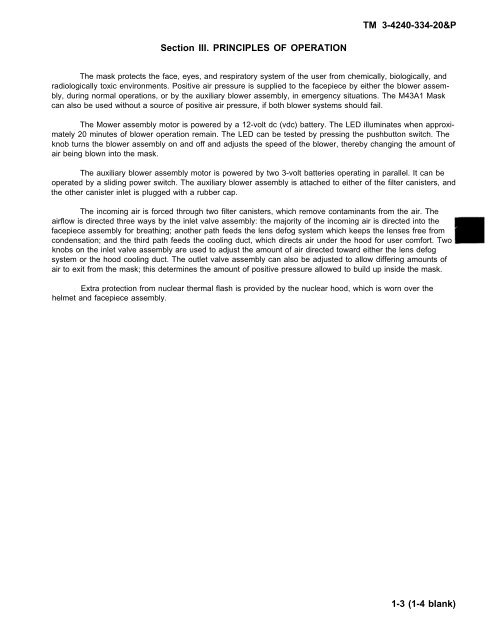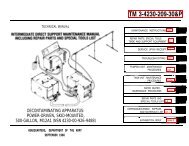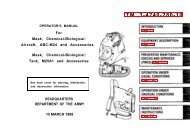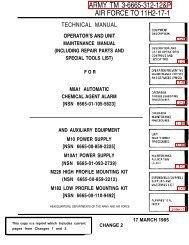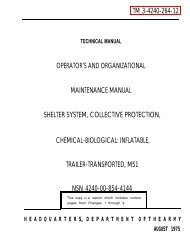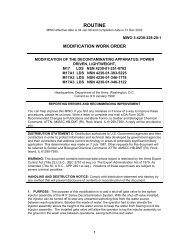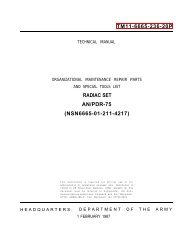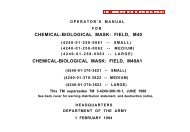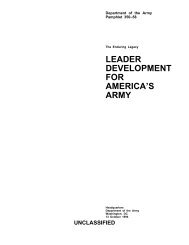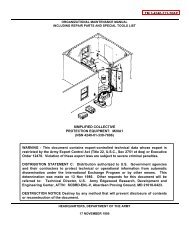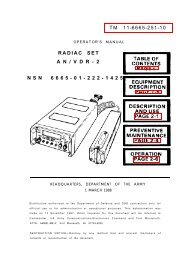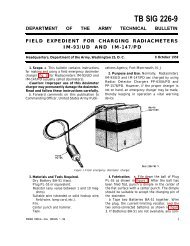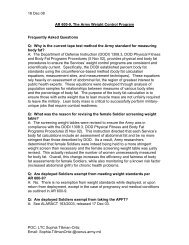TM 3-4240-334-20&P
TM 3-4240-334-20&P
TM 3-4240-334-20&P
Create successful ePaper yourself
Turn your PDF publications into a flip-book with our unique Google optimized e-Paper software.
<strong>TM</strong> 3-<strong>4240</strong>-<strong>334</strong>-20&P<br />
Section III. PRINCIPLES OF OPERATION<br />
The mask protects the face, eyes, and respiratory system of the user from chemically, biologically, and<br />
radiologically toxic environments. Positive air pressure is supplied to the facepiece by either the blower assembly,<br />
during normal operations, or by the auxiliary blower assembly, in emergency situations. The M43A1 Mask<br />
can also be used without a source of positive air pressure, if both blower systems should fail.<br />
The Mower assembly motor is powered by a 12-volt dc (vdc) battery. The LED illuminates when approximately<br />
20 minutes of blower operation remain. The LED can be tested by pressing the pushbutton switch. The<br />
knob turns the blower assembly on and off and adjusts the speed of the blower, thereby changing the amount of<br />
air being blown into the mask.<br />
The auxiliary blower assembly motor is powered by two 3-volt batteries operating in parallel. It can be<br />
operated by a sliding power switch. The auxiliary blower assembly is attached to either of the filter canisters, and<br />
the other canister inlet is plugged with a rubber cap.<br />
The incoming air is forced through two filter canisters, which remove contaminants from the air. The<br />
airflow is directed three ways by the inlet valve assembly: the majority of the incoming air is directed into the<br />
facepiece assembly for breathing; another path feeds the lens defog system which keeps the lenses free from<br />
condensation; and the third path feeds the cooling duct, which directs air under the hood for user comfort. Two<br />
knobs on the inlet valve assembly are used to adjust the amount of air directed toward either the lens defog<br />
system or the hood cooling duct. The outlet valve assembly can also be adjusted to allow differing amounts of<br />
air to exit from the mask; this determines the amount of positive pressure allowed to build up inside the mask.<br />
Extra protection from nuclear thermal flash is provided by the nuclear hood, which is worn over the<br />
helmet and facepiece assembly.<br />
1-3 (1-4 blank)


